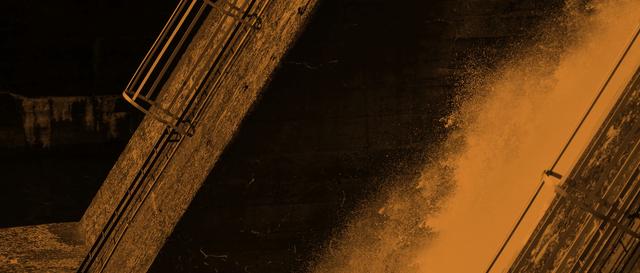The world is an unpredictable place. Planning something as simple as a picnic is hard enough, but preparing for a major project is going to present major issues. Of course, planning for potential problems allows you to handle them properly – obviously easier said than done.
To do so, organizations must go through a process called risk management. This is a technique that starts in the beginning of the planning stage and continues throughout the remainder of the project. Unmitigated risks can easily force a project to go off the rails, which can be an expensive mishap for any company. Therefore, attempting to avoid these issues in the first place just makes sense.
By developing solutions to significant problems that might arise during a venture, company leaders are able to avoid costs that occur due to problems that can arrive during a project.
What Does Risk Management Entail?
Exactly how risk management professionals approach a project is dependent upon the end goal as well as the specific situation. That said, there are a number of basic points that need to be established during every job. TechTarget’s Margaret Rouse broke these down into:
- Identification: Perhaps the hardest part of the whole process, this is where the risk management team is tasked with pointing out all of the problems that may arise during the program.
- Analysis: After all potential issues are hashed out, it’s time to figure out just how likely each complication is. Obviously, a company would want to plan for a problem that’s more probable. That said, even unlikely obstacles need to be discussed.
- Assessment and evaluation: At this point, the risk’s probability is combined with its overall repercussions. For example, the chance of a fire during a certain project may be incredibly low, but this type of disaster would end up derailing the entire operation.
- Mitigation: Once all of the risks are evaluated, the team then marks the highest priority ones and creates plans on how to avoid them, mitigate them, or respond should they arise.
- Monitoring: Finally, it’s the team’s responsibility to keep track of previously discussed risks or new ones that arise during the project. It’s a continuous process that demands constant vigilance.
While each of these processes is going to look different depending on what’s being accomplished, the overall goal is always the same: Hope for the best, and plan for the worst. On top of that, it’s important to note that the plan itself isn’t even the most valuable part of risk management.
The true value here is actually in the process itself. By getting all involved parties together to discuss potential issues, you’re opening up lines of communication that may not have been there otherwise. Through this collaboration, you’re able to see what your options are while also gaining insight into every part of the project.
Avista Project Shows the Benefits of Risk Management
A great example of what risk management can do when implemented properly is Sapere’s work with a recent Avista project. The utility company was working on ways to reduce total dissolved gas (TDG) in the Spokane River which can be a water quality issue that may affect aquatic organisms when found at supersaturated concentrations. In doing so, Avista realized there were big challenges to overcome.
The construction of deflectors on the 100 year old dam structure to reduce TDG levels was going to be a hefty task on its own, but the fact that it needed to be done in a single low-flow season between July and November added another level of complexity. During this short time window, a one mile temporary access road had to be constructed through hilly terrain, explosive blasting was required to clear 20,000 yd3 of rock material next to the dam structure, 600,000 pounds of rebar curtain needed to be installed in custom formwork, and 5,500 yd3 of concrete needed to be placed prior to restoring the shoreline to its original condition.
Starting in October 2015, the project team began planning how Avista could mitigate the many potential risks. This involved the development of a risk register, which was utilized to pool stakeholders together to discuss the most important elements of the project. During a three-month planning period, the project team identified and developed mitigation strategies for 20 specific risks that were likely to materialize and negatively impact construction.
“We ran into 19 out of the 20 risks that we predicted.”
Despite nearly 50 people needing to be coordinated at different times, the project was incredibly successful. That sized group certainly isn’t out of the ordinary, as Sapere generally starts the risk management process with a small team to initially identify the risks before getting all parties involved. The project encountered 19 out of the 20 risks identified, but because there were proactive mitigation plans defined and implemented, minimal delays were encountered and the project was completed ahead of schedule and without any safety incidents, quality of workmanship concerns, or contract claims. On top of that, the total project is projected to complete $1.3M less than the negotiated contract value, which simply wouldn’t have been possible without proper risk management.
This is a perfect example of why organizations need to invest in risk management. It isn’t about cost savings, it’s about cost avoidance. Expenses that occur due to problems down the line are generally avoidable, and simply taking the time to plan for them can allow your organization to sidestep them altogether.
Perhaps the best illustration of how well this process works was the biggest problem encountered: record rainfalls. Due to the fact that the project required crews working in the riverbed below the dam spillway gates, any spill of water into the construction zone would result in significant safety and downstream environmental consequences. Therefore, it was decided that the upstream reservoir should be proactively lowered in order to give workers a buffer for safe removal of personnel and equipment. As it turns out, this reservoir drawdown strategy was crucial with the record rains encountered in October, 2016. Without implementation of this approach, the project would have crossed into a second season and increased costs by a minimum of $4M.
While thinking about factors that could derail a project is unpleasant and could be considered by some as focusing on failure, it’s absolutely essential in this uncertain world. As the saying goes, “if you fail to plan, you are planning to fail.” The more that uncertainties are considered in advance, the more likely they can be avoided or recovered more efficiently when encountered. You may think that you can’t afford the resource commitment necessary for risk management planning, but Sapere believes you cannot afford not to. The key is balancing the effort to the complexity and potential impacts on the project.

Have an interesting project? We love a good challenge.
Our project teams are integrated across practices to make sure we have the right skills, knowledge, and understanding applied to the problem.
